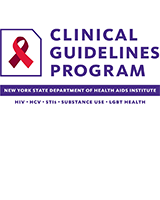|
Opioid Use Disorder Treatment
Clinicians should advise their patients to avoid abrupt discontinuation of opioids, including BUP or methadone, during pregnancy because of the risks posed by withdrawal or resumption of unhealthy use (i.e., heroin) following abstinence. (B2) When offering pregnant patients BUP treatment or referral to an OTP for methadone treatment, clinicians should discuss the maternal and fetal risks and benefits of both medications (see ); the treatment choice should be based on patient preference whenever possible. (A3) Clinicians should educate patients who take opioids, BUP, or methadone during pregnancy about the risk of NOWS, an expected and treatable outcome (see guideline section Neonatal Opioid Withdrawal Syndrome) . (A3) Clinicians should inform patients that breastfeeding while taking BUP or methadone is safe and may reduce the risk of NOWS. (A2) Clinicians should not recommend naltrexone initiation, which requires withdrawal from opioids, for a pregnant patient who is actively using opioids. (A2)
If a pregnant patient is abstinent from opioids and requests treatment with naltrexone, clinicians should discuss naltrexone as an alternative treatment and inform the patient of the associated risks and benefits. (A3) Clinicians should inform patients who become pregnant while taking naltrexone of the risks and benefits and preferred pharmacologic treatment options (see ). (B3)
Before initiating BUP in a pregnant patient with OUD, clinicians should confirm that the patient is experiencing at least mild opioid withdrawal symptoms (B3) and should consult with an experienced substance use treatment provider regarding the risk of precipitated withdrawal. (A3) Clinicians should advise patients who initiate BUP or methadone during pregnancy, and those who become pregnant while taking BUP or methadone, to continue treatment throughout pregnancy, labor, delivery, postpartum, and breastfeeding. (A2) At each visit, clinicians should monitor pregnant patients taking BUP for opioid cravings and withdrawal symptoms and, if present, increase the dose as appropriate for the individual and reassess at the next visit; any dose increase should be maintained until treatment goals can be evaluated postpartum. (A3)
If a pregnant patient is considering a change from methadone to BUP, the clinician should consult an experienced substance use treatment provider because of the risk of precipitated withdrawal. (A3)
Neonatal Opioid Withdrawal Syndrome
Clinicians should provide patient education about neonatal opioid withdrawal syndrome (NOWS) that addresses the risk of NOWS, harm reduction strategies, typical symptoms and duration, and pharmacologic and nonpharmacologic treatment options. (A3) When an infant is at risk of NOWS, the clinician should recommend postpartum contact, including breastfeeding, rooming-in, and skin-to-skin contact. (A2)
Alcohol Use Disorder Treatment
Clinicians should recommend inpatient alcohol withdrawal management for pregnant patients with or at risk for moderate, severe, or complicated alcohol withdrawal ( CIWA-Ar scores ≥10), and consult with an OB/GYN. (A3) Clinicians should use caution when prescribing a benzodiazepine medication for pregnant patients. (B3) Clinicians should advise pregnant patients who use alcohol to abstain from or minimize use during pregnancy and minimize use during breastfeeding to prevent harm to the developing fetus or infant. (A2) Clinicians should provide harm reduction counseling to help minimize the effects of alcohol on the patient and the fetus. (A3) If a pregnant individual cannot decrease or cease alcohol use, the clinician should discuss pharmacotherapy for AUD as a harm reduction approach and engage the patient in shared decision-making regarding its use. (B3) If a patient becomes pregnant while taking pharmacologic medication for AUD or requests medication during pregnancy, clinicians should inform them of the risks and benefits of preferred agents during pregnancy and breastfeeding. (A3) Clinicians should identify and inform patients with AUD and risky alcohol use about available support or behavioral treatment options and provide these options or refer as indicated. (A3)
Tobacco Use Disorder Treatment
For pregnant patients with tobacco use disorder, clinicians should:
Advise patients to abstain from or minimize use during pregnancy to prevent harm to themselves and the fetus. (A2) Offer nicotine replacement therapy (NRT) with or without bupropion after discussing the risks and benefits. (A2) Perform or refer for psychosocial counseling and support. (A1)
Treatment of Other Substance Use Disorders
Clinicians should advise pregnant patients who use any substances to abstain from or minimize use during pregnancy to prevent adverse maternal and neonatal effects. (A3) Clinicians should identify and inform patients about all available treatment options and resources for support and provide appropriate interventions or referrals as needed. (A3)
|
